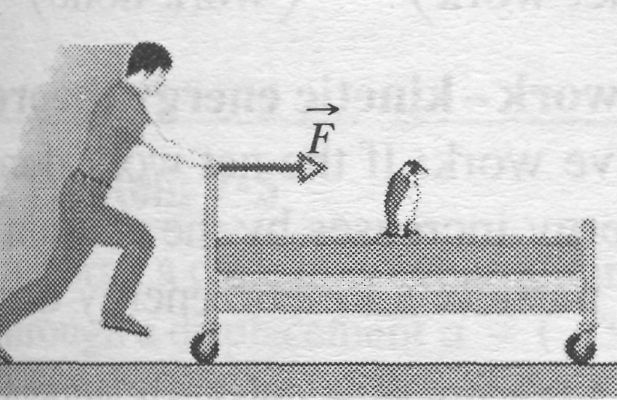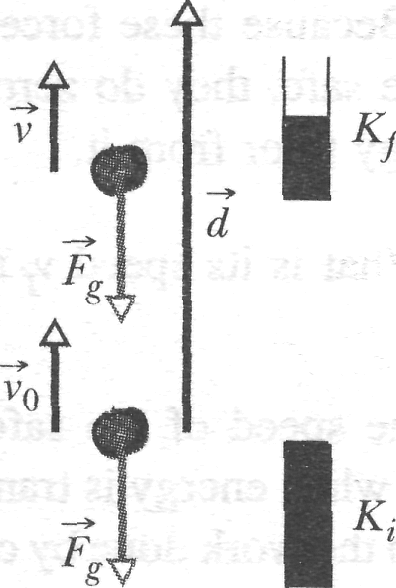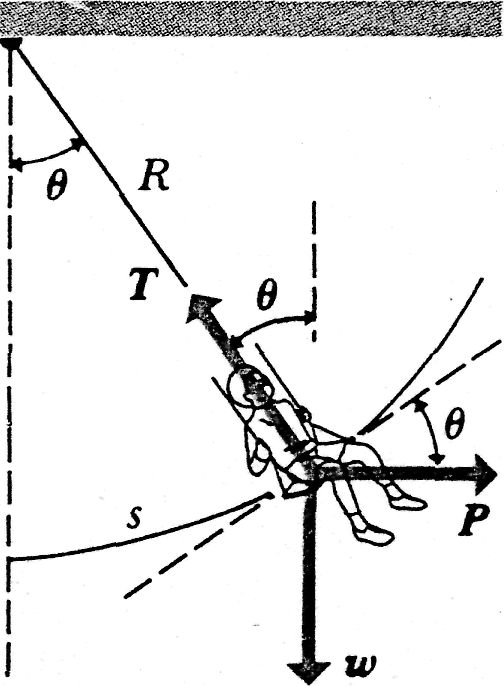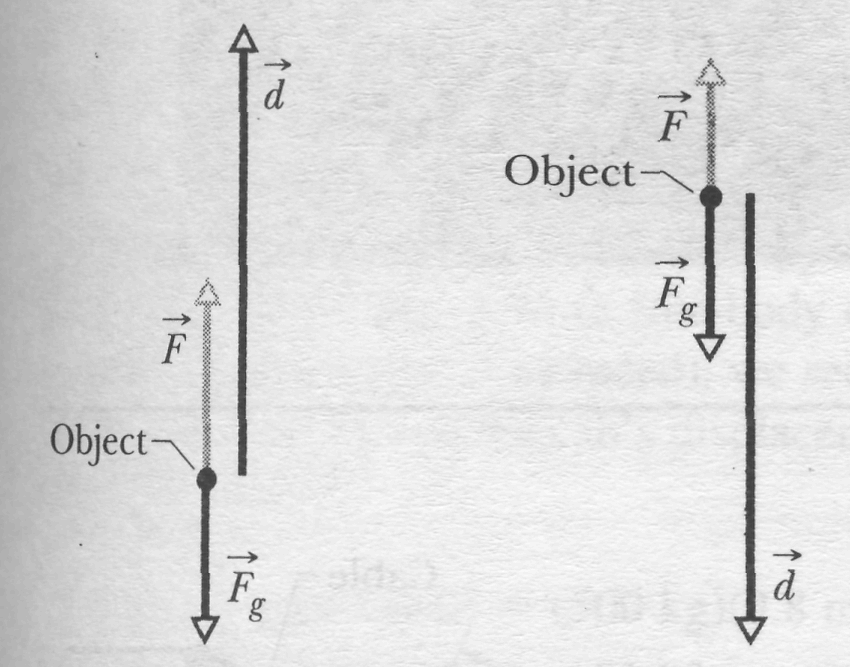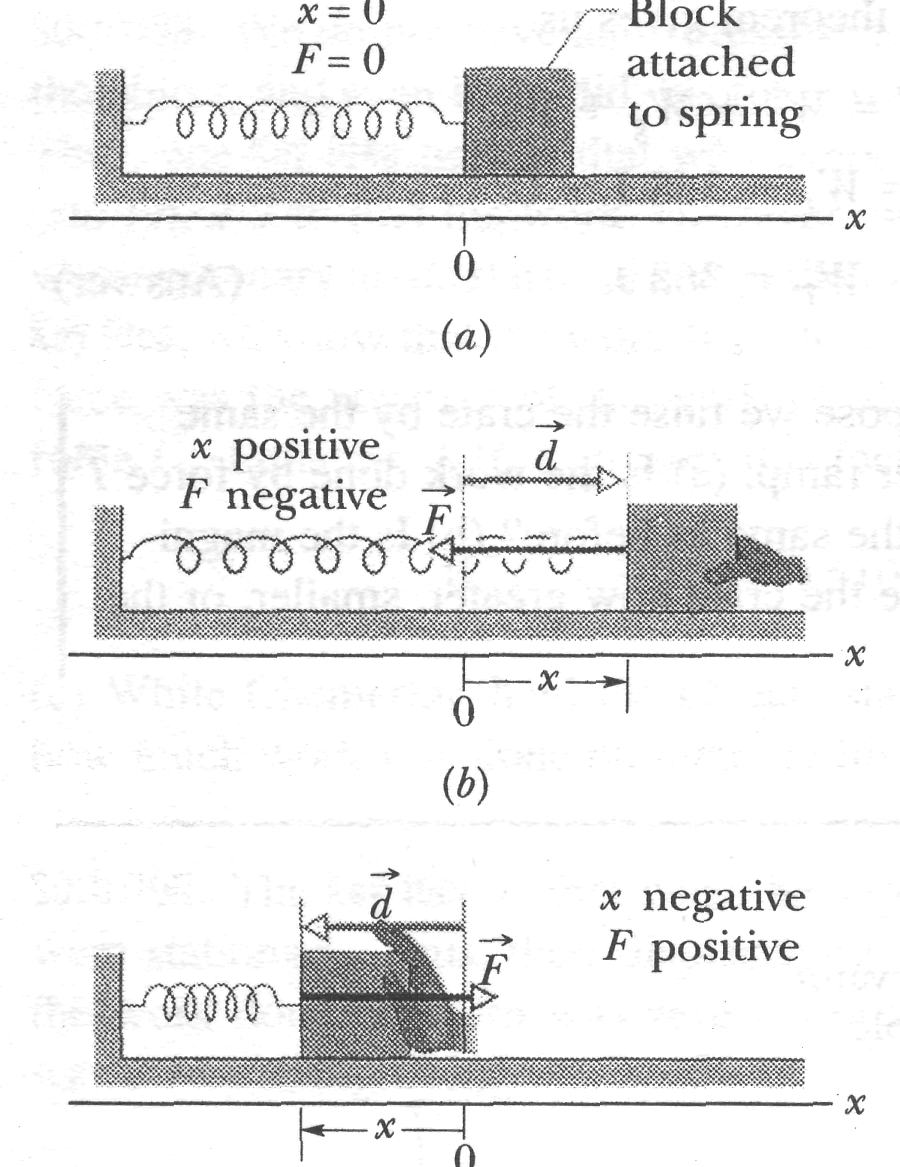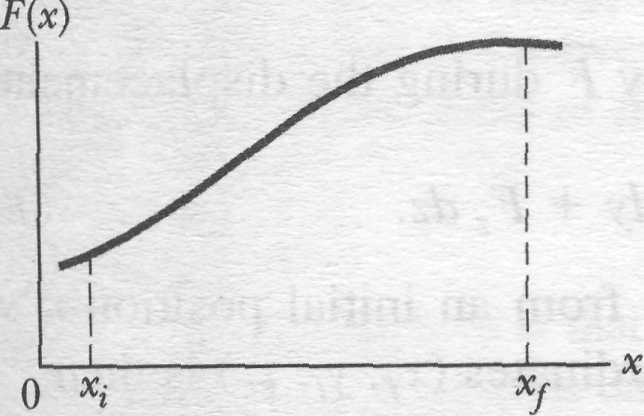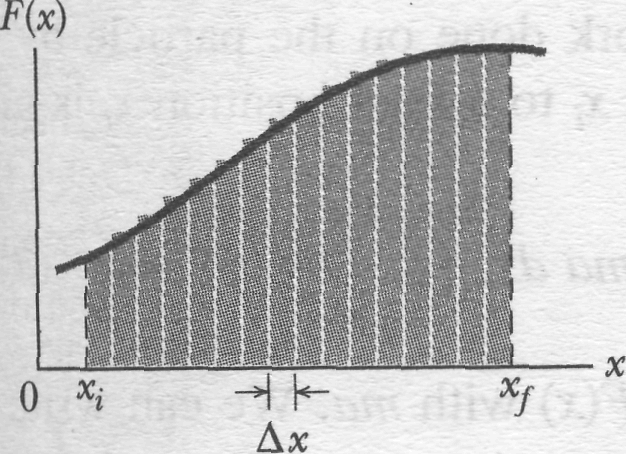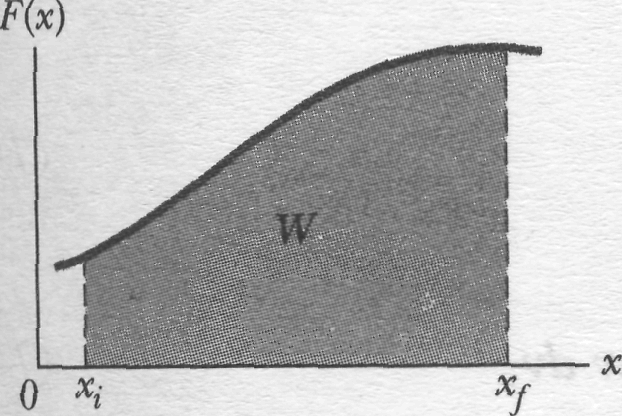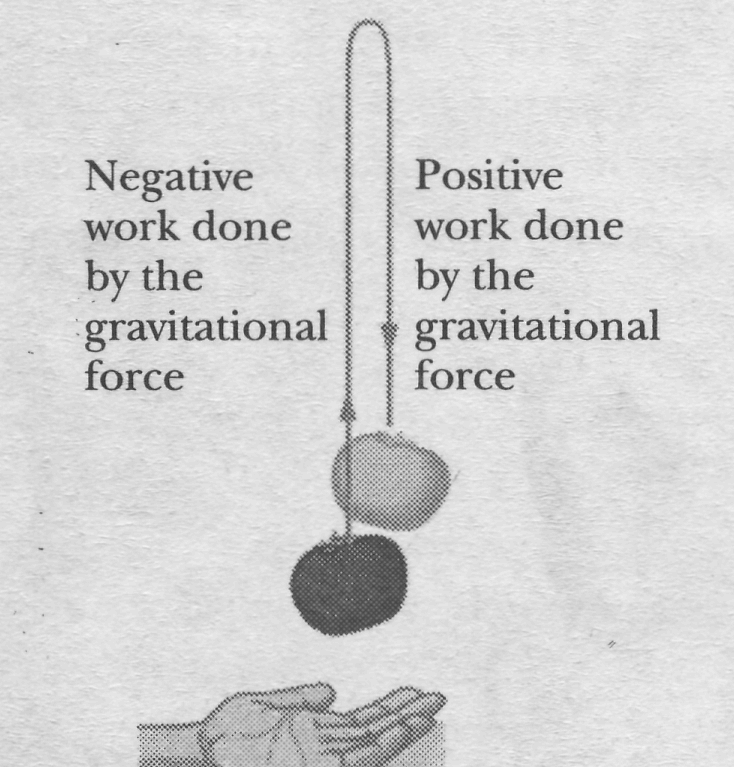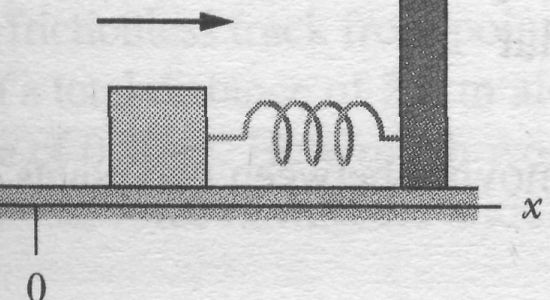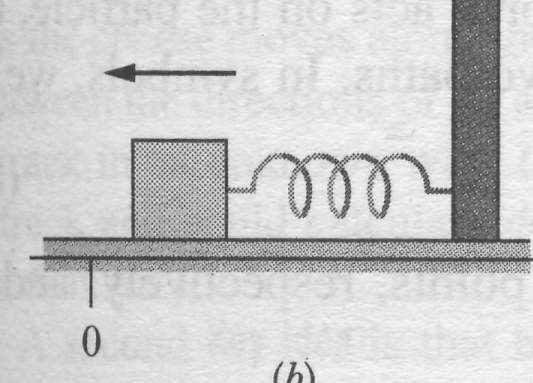
- •Mechanics Kinematics
- •1.2 Position and Displacement
- •Velocity and Coordinate by Integration
- •Dynamics of Translational Motion
- •The Concept of Forces
- •1.15. Rocket Propulsion (Example of Variable Mass Situation)
- •2 Path Independence of Conservative forces
- •Gravitational Potential Energy
- •Isolated System
- •Rotational motion
- •Angular Position
- •Angular Displacement
- •Angular Velocity
- •5.3.1. Uniform slender rod; axis perpendicular to length rod
- •5.3.2. Hollow or solid cylinder
- •5.3.3. Uniform sphere of radius , axis through center
1.15. Rocket Propulsion (Example of Variable Mass Situation)
The principle of conservation of momentum can be applied to study the motion of a rocket. This application is of special significance as rocket is a system in which mass varies with time.
v+dv
Consider a
rocket (may be a multistage rocket) moving vertically upwards from
the surface of earth. Suppose that at time
![]() ,
the mass of the rocket (mass of container and fuel) is
,
the mass of the rocket (mass of container and fuel) is
![]() and
is moving with velocity
w.r.t. earth
as shown in Fig. 1.05a. Let at any time
,
mass
of the rocket be
and
its velocity be
(Fig. 1.05b/).
The
velocity of the rocket increases due to the combustion of the fuel.
Thus,
and
is moving with velocity
w.r.t. earth
as shown in Fig. 1.05a. Let at any time
,
mass
of the rocket be
and
its velocity be
(Fig. 1.05b/).
The
velocity of the rocket increases due to the combustion of the fuel.
Thus,
![]() and
and
![]() .
Suppose
that in the time interval between
and
.
Suppose
that in the time interval between
and
![]() ,
the
mass
of
the fuel gets burnt and the velocity of the rocket increases to
,
the
mass
of
the fuel gets burnt and the velocity of the rocket increases to
![]() .
The
mass
of
the fuel leaves the rocket in downward direction in the form of burnt
gases with velocity
.
The
mass
of
the fuel leaves the rocket in downward direction in the form of burnt
gases with velocity
![]() w.r.t. earth
(Fig. 1.05c).
w.r.t. earth
(Fig. 1.05c).
|
According
to the principle of conservation of momentum, the linear momentum of
mass
of
the rocket at time
must
be equal to the vector sum of the momentum of mass (![]() )
of
the rocket and mass
in
the form of burnt gases. Therefore,
)
of
the rocket and mass
in
the form of burnt gases. Therefore,
![]() . .(1.11)
. .(1.11)
The
velocity
![]() of
burnt gases has been taken as negative, as the burnt gases move in a
direction opposite to that of the rocket. From equation (1.11), we
have
of
burnt gases has been taken as negative, as the burnt gases move in a
direction opposite to that of the rocket. From equation (1.11), we
have
![]()
The factor
![]() is product of two very small quantities and hence can be neglected.
Therefore,
is product of two very small quantities and hence can be neglected.
Therefore,
![]() ...(1.12)
...(1.12)
In the
Eq.(1.12)
represents
the velocity of the rocket w.r.t.
earth
in upward direction
represents
the velocity of the burnt gases w.r.t.
earth
in downward
direction. If
![]() is the relative velocity of
the burnt gases w.r.t.
the
rocket, then
is the relative velocity of
the burnt gases w.r.t.
the
rocket, then
![]() (in
downward direction)
(in
downward direction)
Therefore, the Eq/(1.12) becomes
![]() . ...(1.13)
. ...(1.13)
The negative sign indicates that the velocity of the burnt gases w.r.t. the rocket i.e. is in downward direction.
Expression for velocity of rocket at any instant. From equation (1.13), we have
![]() ...(1.14)
...(1.14)
Now,
when
![]() ,
,
![]() and when
and when
![]() ,
,
![]() .Therefore,
integrating the equation
within the proper limits, we have
.Therefore,
integrating the equation
within the proper limits, we have
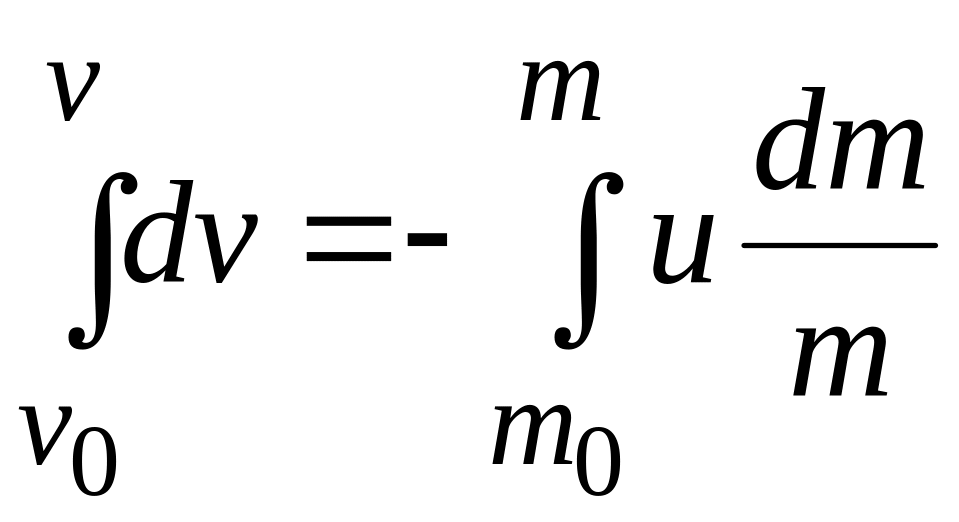 .
.
Usually the exhaust velocity of the burnt gases is assumed to be constant throught the firing of the rocket. Therefore,
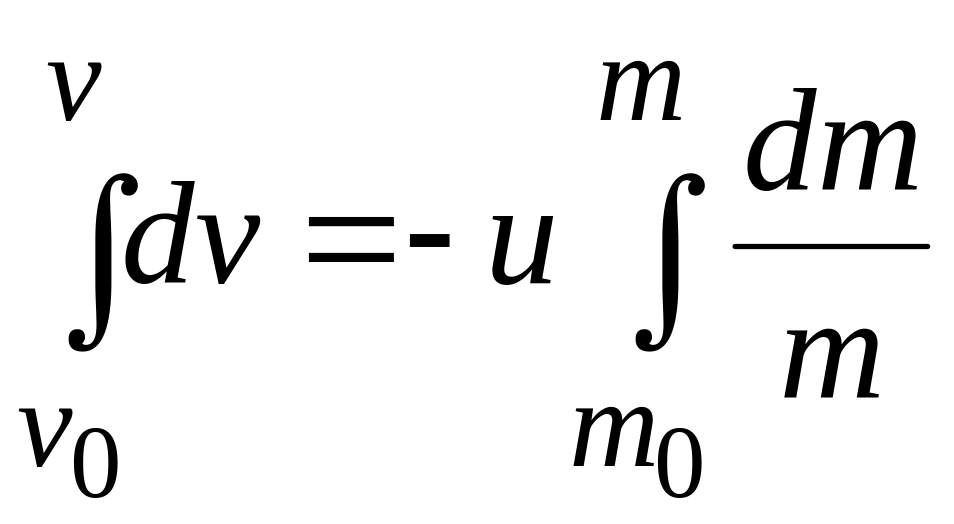
or
![]()
or
![]()
or
![]() ...(1.15)
...(1.15)
Therefore,
The Eq. (1.15) gives the velocity of the rocket at any time , when its mass is .
If at the initial velocity of the rocket is zero, then the above equation becomes
![]() ...(1.15)
...(1.15)
Thus, velocity of the rocket at any instant is directly proportional to
(i) the exhaust speed of the burnt gases and
(ii) the natural logarithm of the ratio of the initial mass of the rocket to its mass at that instant.
Thrust
on the rocket.
Dividing both sides of the equation (1.13) by
![]() ,
we
have
,
we
have
![]()
Since
![]() represents the instantaneous acceleration of the rocket,
represents the instantaneous acceleration of the rocket,
![]() is
equal to the instantaneous
force or thrust on the rocket. Therefore, thrust on the rocket,
is
equal to the instantaneous
force or thrust on the rocket. Therefore, thrust on the rocket,
![]() (1.17)
(1.17)
Since the velocity of the burnt gases w.r.t. the rocket i.e. is in downward direction, it follows that the thrust on the rocket is in upward direction.
Here,
![]() denotes the instantaneous rate of consumption of the fuel in the
rocket.
denotes the instantaneous rate of consumption of the fuel in the
rocket.
Thus, thrust on the rocket at any instant is equal to the product of the exhaust speed of the burnt gases and the rate of combustion of the fuel at that instant.
Burnt out speed of the rocket. The speed acquired by the rocket, when whole of the fuel gets burnt, is called the burnt out speed and it is the maximum speed that can be acquired by the rocket.
Therefore,
when the rocket acquires the burnt-out speed (![]() )
the mass of the rocket becomes equal to that of its empty container,
say
)
the mass of the rocket becomes equal to that of its empty container,
say
![]() i.e.
i.e.
when ![]() ,
,
![]()
In the equation (1.15), setting the above condition, we have
![]() ...(1.18)
...(1.18)
EXAMPLE
8—13 In
the first second of its flight, a rocket ejects
![]() of its mass with a relative velocity of 2400 m/s. What is the
acceleration of the rocket?
of its mass with a relative velocity of 2400 m/s. What is the
acceleration of the rocket?
SOLUTION
We
have
![]() ,
,
![]() s. From Eq. (8-34),
s. From Eq. (8-34),
![]() m/s2.
m/s2.
EXAMPLE
8—14 Suppose
the ratio of initial mass
![]() to
final mass
for
the rocket in Example 8—13 is 4, and that the fuel is consumed in a
time t
=
60 s. Find the rocket's velocity at the end of this time.
to
final mass
for
the rocket in Example 8—13 is 4, and that the fuel is consumed in a
time t
=
60 s. Find the rocket's velocity at the end of this time.
SOLUTION From Eq. (8-35),
![]() .
.
At the
start of the flight, when the velocity of the rocket is zero, the
ejected gases are moving downward, relative to the earth, with a
velocity equal to the relative velocity
![]() .
When
the velocity of the rocket has increased to
,
the
ejected gases have a velocity zero relative to the earth. When the
rocket velocity becomes greater than
,
the velocity of the ejected gases is in the same direction as that of
the rocket. Thus the velocity acquired by the rocket can be greater
(and is often much greater) than the relative velocity
.
In
the example above, where the final velocity of the rocket was 2740
m/s and the relative velocity was 2400 m/s, the last portion of the
ejected fuel had an upward velocity (relative to the earth) of (2740
- 2400) m/s = 340 m/s.
.
When
the velocity of the rocket has increased to
,
the
ejected gases have a velocity zero relative to the earth. When the
rocket velocity becomes greater than
,
the velocity of the ejected gases is in the same direction as that of
the rocket. Thus the velocity acquired by the rocket can be greater
(and is often much greater) than the relative velocity
.
In
the example above, where the final velocity of the rocket was 2740
m/s and the relative velocity was 2400 m/s, the last portion of the
ejected fuel had an upward velocity (relative to the earth) of (2740
- 2400) m/s = 340 m/s.
Example
1.23.
Fuel is consumed at the rate of 100 kg/s
in
a rocket. The exhaust gases are ejected at a speed of
![]() m/s. What is the thrust experienced by the rocket? Also calculate
velocity of the rocket at the instant, when its mass is reduced to
l/10th of its initial mass.
m/s. What is the thrust experienced by the rocket? Also calculate
velocity of the rocket at the instant, when its mass is reduced to
l/10th of its initial mass.
Sol. Here, rate of consumption of the fuel,
![]() kgm/s
kgm/s
speed with which the exhaust gases are ejected,
![]() m/s.
m/s.
Now, thrust experienced by the rocket,
![]() N.
N.
Also,
![]() Here,
Here,
![]() or
or
![]() .
.
![]() m/s.
m/s.
Exercises
What is inertia ? Why do we call the Newton's first law as
the law of inertia ? Explain.
5, State and explain Newton's second law of motion. How
does this law give a unit (measure) of force ? Define SI unit
of force.
State Newton's second law of motion and prove that impulse is equal to the change in momentum produced.
State Newton's second law of motion and prove that impulse is equal to the change in momentum.
State the principle of conservation of linear momentum. Explain, how you will prove this law. Explain one example, where we make use of this law.
Type E. On Rocket propulsion
21. A rocket consumes 24 kg of fuel per second The burnt gases escape the rocket at a speed of 6.4 km/s relative to the rocket. Calculate the upthrust received by the rocket. Also calculate the velocity acquired by the rocket, when its mass reduces to 1/100 of its initial mass.
[Ans. 1.536 x 105 N; 2.94 x 105 m/s]
A rocket of initial mass 6,000 kg ejects mass at a constant rate of 16 kg/s with constant relative speed of 11 km/s. What is the acceleration of the rocket a minute after the blast ? (Neglect gravity)
[Ans.34.92 m/s2 ]
A jet engine works on the principle of conservation of
(A) mass. (B) energy. (C) linear momentum. (D) angular momentum.
Which of the following works on the principle of conservation of linear momentum ?
(A) jet (B) aeroplane (C) rocket (D) all of these
If the force on a rocket moving with a velocity of 300 m/s is 210 N, then the rate of combustion of the fuel is
(A) 07 kg/s (B) 14 kg/s (C) 0.07 kg/s (D) 10.7 kg/s
A 5000 kg rocket is set for vertical firing. The exhaust speed is 800 m/s. To give an initial upward acceleration of 20 m/s2, the amount of gas ejected per second to supply the needed thrust will be (g = 10 m s-2) (A) 127.5 kg/s (B) 137.5 kg/s (C) 155.5 kg/s (D) 187.5 kg/s
WORK AND ENERGY
7-2 Work
If you
accelerate an object to a greater speed by applying a force to the
object, you increase the kinetic energy
![]() of
the object. Similarly, if you decelerate the object to a lesser speed
by applying a force, you decrease the kinetic energy of the
object. We account for these changes in kinetic energy by saying that
your force has
transferred energy to
the
object from yourself or
from the
object to yourself.
of
the object. Similarly, if you decelerate the object to a lesser speed
by applying a force, you decrease the kinetic energy of the
object. We account for these changes in kinetic energy by saying that
your force has
transferred energy to
the
object from yourself or
from the
object to yourself.
In such a transfer of energy via a force, work is said to be done on the object by the force. More formally, we define work as follows:
Work is energy transferred to or from an object by means of a force acting on the object. Energy transferred to the object is positive work, and energy transferred from the object is negative work.
"Work," then, is transferred energy; "doing work" is the act of transferring the energy. Work has the same units as energy and is a scalar quantity.
The term transfer can be misleading. It does not mean that anything material flows into or out of the object; that is, the transfer is not like a flow of water. Rather it is like the electronic transfer of money between two bank accounts: The number in one account goes up while the number in the other account goes down, with nothing material passing between the two accounts.
Note that we are not concerned here with the common meaning of the word "work," which implies that any physical or mental labor is work. For example, if you push hard against a wall, you tire because of the continuously repeated muscle contractions that are required, and you are, in the common sense, working. However, such effort does not cause an energy transfer to or from the wall and thus is not work done on the wall as defined here.
To avoid confusion in this chapter, we shall use the symbol only for work and shall represent a weight with its equivalent .
7-3 Work and Kinetic Energy
Finding an Expression for Work
Let us find an expression for work by considering a bead that can slide along a frictionless wire, which is stretched along a horizontal axis (Fig. 7-2). A constant force , directed at an angle to the wire, accelerates the bead along the wire. We can relate the force and the acceleration with Newton's second law, written for components along the axis:
![]() (7-3)
(7-3)
where
is
the bead's mass. As the bead moves through a displacement
![]() ,
the
force changes the bead's velocity from an initial value
to another value
.
Because the force is constant, we know that the acceleration is also
constant. Thus, we can use Eq. 2-16 (one of the basic
constant-acceleration equations of Chapter 2) to write, for
components along the
axis,
,
the
force changes the bead's velocity from an initial value
to another value
.
Because the force is constant, we know that the acceleration is also
constant. Thus, we can use Eq. 2-16 (one of the basic
constant-acceleration equations of Chapter 2) to write, for
components along the
axis,
![]() (7-4)
(7-4)
Solving
this equation for
![]() ,
substituting
into Eq. 7-3, and rearranging then give us
,
substituting
into Eq. 7-3, and rearranging then give us
![]() (7-5)
(7-5)
The first
term on the left side of the equation is the kinetic energy
![]() of
the bead at the end of the displacement
,
and
the second term is the kinetic energy
of
the bead at the end of the displacement
,
and
the second term is the kinetic energy
![]() of
the bead at the start of the displacement. Thus, the left side of Eq.
7-5 tells us the kinetic energy has been changed by the force, and
the right side tells us the change is equal to
of
the bead at the start of the displacement. Thus, the left side of Eq.
7-5 tells us the kinetic energy has been changed by the force, and
the right side tells us the change is equal to
![]() .
Therefore,
the work
done
on the bead by the force (the energy transfer due to the force) is
.
Therefore,
the work
done
on the bead by the force (the energy transfer due to the force) is
![]() .
(7-6)
.
(7-6)
If we know values for and , we can use this equation to calculate the work done on the bead by the force.
To calculate the work done on an object by a force during a displacement, we use only the force component along the object's displacement. The force component perpendicular to the displacement does zero work.
From Fig.
7-2, we see that we can write
as
![]() ,
where
is
the angle between the directions of the displacement
and
the force
.
We
can rewrite Eq. 7-6 in a more general form as
,
where
is
the angle between the directions of the displacement
and
the force
.
We
can rewrite Eq. 7-6 in a more general form as
![]() (work done
by a constant force)
(7-7)
(work done
by a constant force)
(7-7)
|
![]() done
by a constant force).
(7-8)
done
by a constant force).
(7-8)
(You may wish to review the discussion of scalar products in Section 3-7.) Equation 7-8 is especially useful for calculating the work when and are given in unit-vector notation.
Cautions: There are two restrictions to using Eqs. 7-6 through 7-8 to calculate work done on an object by a force. First, the force must be a constant force; that is, it must not change in magnitude or direction as the object moves. (Later, we shall discuss what to do with a variable force that changes in magnitude.) Second, the object must be particle-like. This means that the object must be rigid; all parts of the object must move together, in the same direction. In this chapter we consider only particle-like objects, such as the bed and its rider being pushed in Fig. 7-3.
|
Signs
for work. The
work done on an object by a force can be either positive work
or negative work. For example, if the angle
in
Eq. 7-7 is less than 90°, then
![]() is
positive and thus so is the work. If
is
greater than 90° (up to 180°), then
is
negative and thus so is the work. (Can you see that the work is zero
when
is
positive and thus so is the work. If
is
greater than 90° (up to 180°), then
is
negative and thus so is the work. (Can you see that the work is zero
when
![]() ?)
These results lead to a simple rule. To find the sign of the work
done by a force, consider the vector component of the force along the
displacement:
?)
These results lead to a simple rule. To find the sign of the work
done by a force, consider the vector component of the force along the
displacement:
A force does positive work when it has a vector component in the same direction as the displacement, and it does negative work when it has a vector component in the opposite direction. It does zero work when it has no such vector component.
Units for work. Work has the SI unit of the joule, the same as kinetic energy. However, from Eqs. 7-6 and 7-7 we can see that an equivalent unit is the newton-meter (N • m). The corresponding unit in the British system is the foot-pound (ft • lb). Extending Eq. 7-2, we have
1 J = kg • m2/s2 = 1 N • m = 0.738 ft • lb.(7-9)
Net
work done by several forces. When
two or more forces act on an object, the net
work
done
on the object is the sum of the works done by the individual forces.
We
can calculate the net work in two ways. (1) We can find the work done
by each force
and then sum those works. (2) Alternatively, we can first find the
net force
![]() of
those forces. Then we can use Eq. 7-7, substituting the magnitude
of
those forces. Then we can use Eq. 7-7, substituting the magnitude
![]() for
,
and
the angle between the directions of
and the displacement for
;
or
we can use Eq. 7-8 with
substituted for
.
for
,
and
the angle between the directions of
and the displacement for
;
or
we can use Eq. 7-8 with
substituted for
.
Work-Kinetic Energy Theorem
Equation
7-5 relates the change in kinetic energy of the bead (from an initial
![]() to
a later
to
a later
![]() )
to
the work
)
to
the work
![]() done
on the bead. For such particle-like
objects, we can generalize that equation. Let
done
on the bead. For such particle-like
objects, we can generalize that equation. Let
![]() be the change in the kinetic
energy of the object, and
the net work done on it. Then we can write
be the change in the kinetic
energy of the object, and
the net work done on it. Then we can write
![]() (7-10)
(7-10)
which says that
![]() (7-11)
(7-11)
which says that
These statements are known traditionally as the work-kinetic energy theorem for particles. They hold for both positive and negative work: If the net work done on a particle is positive, then the particle's kinetic energy increases by the amount of the work. If the net work done is negative, then the particle's kinetic energy decreases by the amount of the work.
For example, if the kinetic energy is initially 5 J and there is a net transfer of 2 J to the particle (positive net work), then the final kinetic energy is 7 J. If, instead, there is a net transfer of 2 J from the particle (negative net work), then the final kinetic energy is 3 J.
|
Fig. 7-6 A particle-like tomato of mass m thrown upward slows from velocity 70 to velocity ~v during displacement d because the gravitational force Fg acts on it. A kinetic energy gauge indicates the resulting change in the kinetic energy of the object, from ЛГ, (= {mv§) to Kf{= \mv2).
7-4 Work Done by a Gravitational force
We next
examine the work done on an object by a particular type of force -
namely, the gravitational force acting on it. Figure 7-6 shows a
particle-like tomato of mass
that
is thrown upward with initial speed
and thus with initial kinetic energy
.
As
the tomato rises, it is slowed by a gravitational force
![]() ;
that
is, the tomato's kinetic energy decreases because
does
work on the tomato as it rises.
;
that
is, the tomato's kinetic energy decreases because
does
work on the tomato as it rises.
Because we
can treat the tomato as a particle, we can use Eq. 7-7 (
)
to
express the work done during a displacement
.
For
the force magnitude
,
we
use
as
the magnitude of
.
Thus,
the work
![]() done
by the gravitational force
,
is
done
by the gravitational force
,
is
![]() work
done
by gravitational force (7-12)
work
done
by gravitational force (7-12)
For a
rising object, force
is
directed opposite the displacement
,
as
indicated in Fig. 7-6. Thus,
![]() and
and
![]() (7-13)
(7-13)
The minus
sign tells us that during the object's rise, the gravitational force
on the object transfers energy in the amount
![]() from
the kinetic energy of the object. This is consistent with the slowing
of the object as it rises.
from
the kinetic energy of the object. This is consistent with the slowing
of the object as it rises.
After the
object has reached its maximum height and is falling back down, the
angle
![]() between
force
and
displacement
is zero. Thus,
between
force
and
displacement
is zero. Thus,
![]()
The plus sign tells us that the gravitational force now transfers energy in the amount to the kinetic energy of the object. This is consistent with the speeding up of the object as it falls. (Actually, as we shall see in Chapter 8, energy transfers associated with lifting and lowering an object involve not just the object, but the full object-Earth system. Without Earth, of course, "lifting" would be meaningless.)
EXAMPLE
7—3
A
child of weight
sits
on a swing of length
,
as
shown in Fig. 7-7. A variable
horizontal
force
,
which
starts at zero and gradually increases, is used to pull the child
very slowly (so that equilibrium exists at all times) until the ropes
make an angle
![]() with
the vertical. Calculate the work of the force
.
with
the vertical. Calculate the work of the force
.
SOLUTION The body is in equilibrium, so the sum of the horizontal forces equals zero:
![]() .
.
The sum of the vertical forces is also zero:
![]() .
.
Dividing these two equations, we find
![]() .
.
The point
of application of
swings
through the arcs.
Since
![]() ,
,
![]() and
and

|
EXAMPLE 7—10 In Jules Verne's story "From the Earth to the Moon" (written in 1865) three men were shot to the moon in a shell fired from a giant cannon sunk in the earth in Florida. What muzzle velocity would be needed (a) to raise a total mass m to a height above the earth equal to the earth's radius; (b) to escape from the earth completely? To simplify the calculation, neglect the gravitational pull of the moon.
SOLUTION
a) In Eq. (7-23), let be the total projectile mass and let be the initial velocity.
Then
![]() ,
,
![]() ,
,
![]() and
and
![]() or
or
![]()
![]()
Then
When is the escape velocity, ,
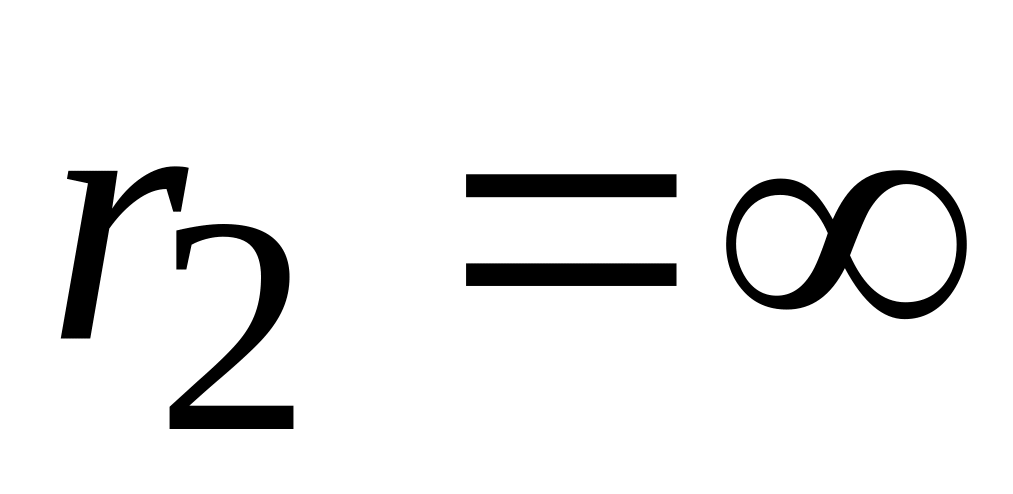 ,
.
Then
,
.
Then
![]() or
or
![]() ,
,
![]()
Note that
the speed of an earth satellite in a circular orbit of radius just
slightly greater than
is,
from Eq. (6—22), the same as the result of part (a), and that the
escape velocity is larger than this by exactly a factor of
![]() .
.
Work Done in Lifting and Lowering an Object
Now suppose
we lift a particle-like object by applying a vertical force
to it. During the upward displacement, our applied force does
positive work
![]() on
the object while the gravitational force does negative work
on
the object while the gravitational force does negative work
![]() on it. Our force tends to transfer energy to the object while the
gravitational force tends to transfer energy from it. By Eq. 7-10,
the change
in the kinetic energy of the object due to these two energy transfers
is
on it. Our force tends to transfer energy to the object while the
gravitational force tends to transfer energy from it. By Eq. 7-10,
the change
in the kinetic energy of the object due to these two energy transfers
is
![]() (7-15)
(7-15)
in which is the kinetic energy at the end of the displacement and is that at the start of the displacement. This equation also applies if we lower the object, but then the gravitational force tends to transfer energy to the object while our force tends to transfer energy from it.
|
![]()
Or
![]() (7-16)
(7-16)
Note that we get the same result if and are not zero but are still equal. Either way, the result means that the work done by the applied force is the negative of the work done by the gravitational force; that is, the applied force transfers the same amount of energy to the object as the gravitational force transfers from the object. Using Eq. 7-12, we can rewrite Eq. 7-16 as
![]() (work
in lifting and lowering;
(work
in lifting and lowering;
![]() (7-17)
(7-17)
with
being
the angle between
and
.
If
the displacement is vertically upward (Fig. 7-7
a), then
and the work done by our force equals
.
If
the displacement is vertically downward (Fig. 1-lb),
then
![]() and the work done by the applied force equals
and the work done by the applied force equals
![]() .
.
Equations 7-16 and 7-17 apply to any situation in which an object is lifted or lowered, with the object stationary before and after the lift. They are independent of the magnitude of the force used. For example, when Chemerkin made his record-breaking lift, his force on the object he lifted varied considerably during the lift. Still, because the object was stationary before and after the lift, the work he did is given by Eqs. 7-16 and 7-17, where, in Eq. 7-17, mg is the weight of the object he lifted and d is the distance he lifted it.
7-5 Work Done by a Spring force
We next want to examine the work done on a particle-like object by a particular type of variable force - namely, a spring force, the force from a spring. Many forces in nature have the same mathematical form as the spring force. Thus, by examining this one force, you can gain an understanding of many others.
|
Figure 7-lOa shows a spring in its relaxed state - that is, neither compressed nor extended. One end is fixed, and a particle-like object, say, a block, is attached to the other, free end. If we stretch the spring by pulling the block to the right as in Fig. 7- 10b, the spring pulls on the block toward the left. (Because a spring's force acts to restore the relaxed state, it is sometimes said to be a restoring force.) If we compress the spring by pushing the block to the left as in Fig. 7-10c, the spring now pushes on the block toward the right.
To a good approximation for many springs, the force from a spring is proportional to the displacement of the free end from its position when the spring is in the relaxed state. The spring force is given by
![]() (Hooke's
law),
(7-20)
(Hooke's
law),
(7-20)
which is known as Hooke's law after Robert Hooke, an English scientist of the late 1600s. The minus sign in Eq. 7-20 indicates that the spring force is always opposite in direction from the displacement of the free end. The constant is called the spring constant (or force constant) and is a measure of the stiffness of the spring. The larger is, the stiffer the spring; that is, the stronger will be its pull or push for a given displacement. The SI unit for is the newton per meter.
In Fig.
7-10 an
axis
has been placed parallel to the length of a spring, with the origin
(![]() )
at the position of the free end when the spring is in its relaxed
state. For this common arrangement, we can write Eq. 7-20 as
)
at the position of the free end when the spring is in its relaxed
state. For this common arrangement, we can write Eq. 7-20 as
![]() (Hooke's
law),
(7-21)
(Hooke's
law),
(7-21)
If is positive (the spring is stretched toward the right on the axis), then is negative (it is a pull toward the left). If is negative (the spring is compressed toward the left), then is positive (it is a push toward the right).
Note
that a spring force is a variable
force because
its magnitude and direction depend
on the position
of
the free end;
can
be symbolized as
![]() .
Also
note that Hooke's law is a linear
relationship
between
and
.
.
Also
note that Hooke's law is a linear
relationship
between
and
.
The Work Done by a Spring Force
To find an expression for the work done by the spring force as the block in Fig. 7-10a moves, let us make two simplifying assumptions about the spring. (1) It is massless; that is, its mass is negligible compared to the block's mass. (2) It is an ideal spring; that is, it obeys Hooke's law exactly. Let us also assume that the contact between the block and the floor is frictionless and that the block is particle-like.
We give the block a rightward jerk to get it moving, and then leave it alone. As the block moves rightward, the spring force does work on the block, decreasing the kinetic energy and slowing the block. However, we cannot find this work by using Eq. 7-7 ( ) because that equation assumes a constant force. The spring force is a variable force.
To find the
work done by the spring, we use calculus. Let the block's initial
position be
![]() and
its later position
and
its later position
![]() .
Then divide the distance between those two positions into many
segments, each of tiny length
.
Label these segments, starting from
.
Then divide the distance between those two positions into many
segments, each of tiny length
.
Label these segments, starting from
![]() as
segments 1, 2, and so on. As the block moves through a segment, the
spring force hardly varies because the segment is so short that
hardly varies. Thus, we
can approximate the force magnitude as being constant within the
segment. Label these
magnitudes as
as
segments 1, 2, and so on. As the block moves through a segment, the
spring force hardly varies because the segment is so short that
hardly varies. Thus, we
can approximate the force magnitude as being constant within the
segment. Label these
magnitudes as
![]() in
segment 1,
in
segment 1,
![]() in
segment 2, and so on.
in
segment 2, and so on.
With the
force now constant in each segment, we can
find
the work done within each segment by using Eq. 7-7 (
).
Here
,
so
![]() .
Then the work done is
.
Then the work done is
![]() in segment 1,
in segment 1,
![]() in segment 2, and so on. The net work
in segment 2, and so on. The net work
![]() done
by the spring, from
done
by the spring, from
![]() - to
,
is
the sum of all these works:
- to
,
is
the sum of all these works:
![]() , (7-22)
, (7-22)
where
![]() labels the segments. In the limit as
labels the segments. In the limit as
![]() goes to zero, Eq. 7-22 becomes
goes to zero, Eq. 7-22 becomes
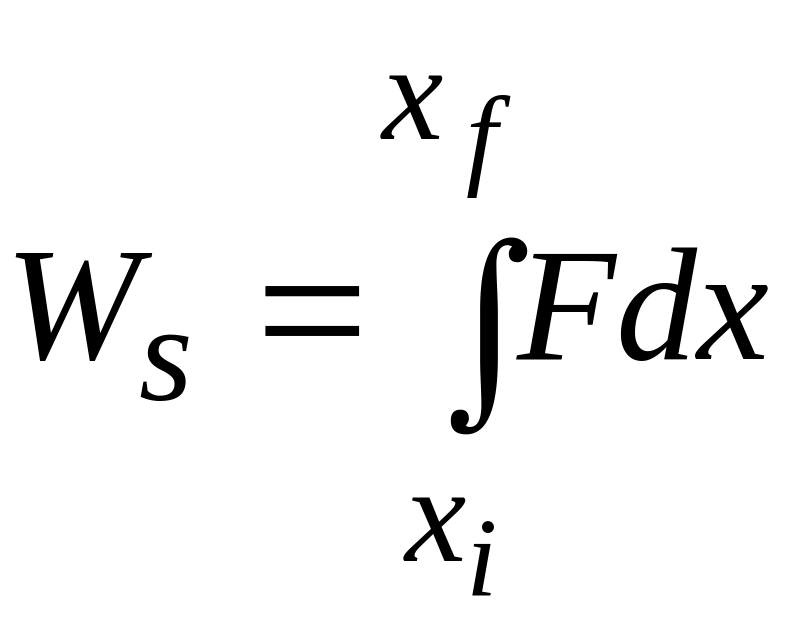 (7-23)
(7-23)
Substituting for from Eq. 7-21, we find

This work done by the spring force can have a positive or negative value, depending on whether the net transfer of energy is to or from the block as the block moves from to ,. Caution: The final position appears in the second term on the right side of Eq. 7-25. Therefore, Eq. 7-25 tells us:
Work is positive if the block ends up closer to the relaxed position ( ) than it was initially. It is negative if the block ends up farther away from . It is zero if the block ends up at the same distance from .
If
![]() and
if we call the final position
,
then Eq. 7-25 becomes
and
if we call the final position
,
then Eq. 7-25 becomes
![]() (work by a
spring force).
(7-26)
(work by a
spring force).
(7-26)
The Work Done by an Applied force
Now suppose
that we displace the block along the
axis while continuing to apply a force
![]() to
it. During the displacement, our applied force does work
to
it. During the displacement, our applied force does work
![]() on
the block while the spring force does work
.
By
Eq. 7-10, the change
in
the kinetic energy of the block due to these two energy transfers is
on
the block while the spring force does work
.
By
Eq. 7-10, the change
in
the kinetic energy of the block due to these two energy transfers is
![]() (7-27)
(7-27)
in which Kf is the kinetic energy at the end of the displacement and Kt is that at the start of the displacement. If the block is stationary before and after the displacement, then Kf and Kt are both zero and Eq. 7-27 reduces to
![]() (7-28)
(7-28)
If a block that is attached to a spring is stationary before and after a displacement, then the work done on it by the applied force displacing it is the negative of the work done on it by the spring force.
7-6 Work Done by a General Variable force
One-Dimensional Analysis
Let us return to the situation of Fig. 7-2 but now consider the force to be directed along the axis and the force magnitude to vary with position . Thus, as the bead (particle) moves, the magnitude of the force doing work on it changes. Only the magnitude of this variable force changes, not its direction, and the magnitude at any position does not change with time.
|
|
With
![]() considered constant, the increment (small amount) of work
considered constant, the increment (small amount) of work
![]() ,-done
by the force in the
-th
interval is now approximately given by Eq. 7-7 and is
,-done
by the force in the
-th
interval is now approximately given by Eq. 7-7 and is
![]() (7-29)
(7-29)
In Fig. 7-12b, , is then equal to the area of the -th rectangular, shaded strip.
To approximate the total work done by the force as the particle moves from to , we add the areas of all the strips between and in Fig. 7-12b:
![]() (7-30)
(7-30)
Equation 7-30 is an approximation because the broken "skyline" formed by the tops of the rectangular strips in Fig. 1-I2b only approximates the actual curve of .
|
![]() (7-31)
(7-31)
|
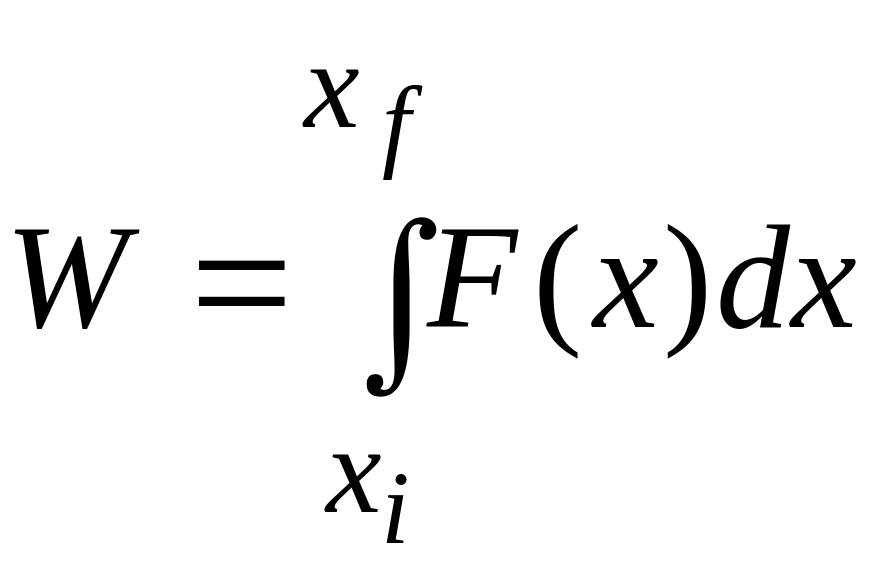 (7-32)
(7-32)
If we know the function , we can substitute it into Eq. 7-32, introduce the proper limits of integration, carry out the integration, and thus find the work.
Three-Dimensional Analysis
Consider now a particle that is acted on by a three-dimensional force
![]() (7-33
(7-33
in which
the components
![]() ,
,
![]() ,
and
,
and
![]() can
depend on the position of the particle that is, they can be functions
of that position. However, we make three simplifications:
may
depend on
but
not on
or
,
may
depend on
but
not on
or
,
and
may
depend on
but not on
or
.
Now
let the particle move through an incremental
displacement
can
depend on the position of the particle that is, they can be functions
of that position. However, we make three simplifications:
may
depend on
but
not on
or
,
may
depend on
but
not on
or
,
and
may
depend on
but not on
or
.
Now
let the particle move through an incremental
displacement
![]() (7-34)
(7-34)
The
increment of work
![]() done
on the particle by
during
the displacement
done
on the particle by
during
the displacement
![]() is,
by Eq. 7-8,
is,
by Eq. 7-8,
![]() (7-35)
(7-35)
The
work
done
by
while
the particle moves from an initial position
![]() with
coordinates
(
,
with
coordinates
(
,![]() ,
,![]() )
to a final position
)
to a final position
![]() with
coordinates (
,
with
coordinates (
,![]() ,
,![]() )
is then
)
is then
 (7-36)
(7-36)
If has only an component, then the and terms in Eq. 7-36 are zero and the equation reduces to Eq. 7-32.
Work-Kinetic Energy Theorem with a Variable Force
Equation 7-32 gives the work done by a variable force on a particle in a one-dimensional situation. Let us now make certain that the work calculated with Eq. 7-32 is indeed equal to the change in kinetic energy of the particle, as the work-kinetic energy theorem states.
Consider a particle of mass , moving along the axis and acted on by a net force that is directed along that axis. The work done on the particle by this force as the particle moves from an initial position to a final position is given by Eq. 7-32 as
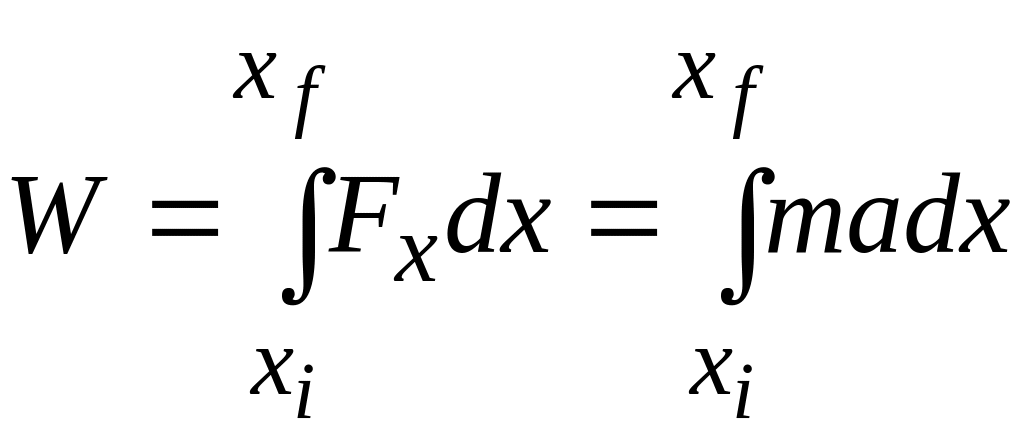 (7-37)
(7-37)
in which we
use Newton's second law to replace
with
![]() .
We
can write the quantity
.
We
can write the quantity
![]() (7-38)
(7-38)
in Eq. 7-37 as
From the "chain rule" of calculus, we have
![]() (7-39)
(7-39)
and Eq. 7-38 becomes
![]() (7-40)
(7-40)
Substituting (7-40) into 7-37 yields
 (7-41)
(7-41)
Note that when we change the variable from to we are required to express the limits on the integral in terms of the new variable. Note also that because the mass m is a constant, we are able to move it outside the integral.
Recognizing the terms on the right side of Eq. 7-41 as kinetic energies allows us to write this equation as
![]()
which is the work-kinetic energy theorem.
Sample Problem 7-9
Force
![]() ,
with
in
meters, acts on a particle, changing
only the kinetic energy of the particle. How much work is done on the
particle as it moves from coordinates (2 m, 3 m) to (3
m, 0 m)? Does the speed of the particle increase, decrease, or remain
the same?
,
with
in
meters, acts on a particle, changing
only the kinetic energy of the particle. How much work is done on the
particle as it moves from coordinates (2 m, 3 m) to (3
m, 0 m)? Does the speed of the particle increase, decrease, or remain
the same?
SOLUTION; The Key Idea here is that the force is a variable force because its component depends on the value of . Thus, we cannot use Eqs. 7-7 and 7-8 to find the work done. Instead, we must use Eq. 7-36 to integrate the force:
The positive result means that energy is transferred to the particle by force F. Thus, the kinetic energy of the particle increases, and so must its speed.
7-7 Power
A contractor wishes to lift a load of bricks from the sidewalk to the top of a building by means of a winch. We can now calculate how much work the force applied by the winch must do on the load to make the lift. The contractor, however, is much more interested in the rate at which that work is done. Will the job take 5 minutes (acceptable) or a week (unacceptable)?
The time rate at which work is done by a force is said to be the power due to the force. If an amount of work is done in an amount of time by a force, the average power due to the force during that time interval is
![]() (7-42)
(7-42)
The instantaneous power is the instantaneous time rate of doing work, which we can write as
![]() (7-42)
(7-42)
Suppose we
know the work
![]() done
by a force as a function of time. Then to get the instantaneous power
at,
say, time
done
by a force as a function of time. Then to get the instantaneous power
at,
say, time
![]() s during the work, we would first take the time derivative of
,
and
then evaluate the result for
s.
s during the work, we would first take the time derivative of
,
and
then evaluate the result for
s.
The SI unit of power is the joule per second. This unit is used so often that it has a special name, the watt (W), after James Watt, who greatly improved the rate at which steam engines could do work. In the British system, the unit of power is the foot-pound per second. Often the horsepower is used. Some relations among these units are
![]()
And
![]() W.
W.
We can also express the rate at which a force does work on a particle (or particle like object) in terms of that force and the particle's velocity. For a particle that i! moving along a straight line (say, the x axis) and is acted on by a constant force / directed at some angle to that line, Eq. 7-43 becomes
![]() ,
,
or
![]()
Reorganizing
the right side of Eq. 7-47 as the dot product
![]() ,
we
may also write Eq. 7-47 as
,
we
may also write Eq. 7-47 as
![]()
For
example, the truck in Fig. 7-13 exerts a force
![]() on
the trailing load, which has velocity
at some instant. The instantaneous power due to
on
the trailing load, which has velocity
at some instant. The instantaneous power due to
![]() is
the rate at which
does
work on the load at that instant and is given by Eqs. 7-47 and 7-48.
Saying that this power is "the power of the truck" is often
acceptable, but we should keep in mind what is meant: Power is the
fate at which the applied force
does
work.
is
the rate at which
does
work on the load at that instant and is given by Eqs. 7-47 and 7-48.
Saying that this power is "the power of the truck" is often
acceptable, but we should keep in mind what is meant: Power is the
fate at which the applied force
does
work.
•CHECKPOINT 5: A block moVes with uniform circular motion because a cord tied to the block is anchored at the center of a circle. Is the power due to the force on the block from the cord positive, negative, or zero?
Sample Problem 7-10
Figure 7-14
shows constant forces
![]() and
and
![]() acting
on a box as the box slides rightward across a frictionless floor.
Force
is
horizontal, with magnitude 2.0 N; force
is
angled upward by 60° to the floor and has magnitude 4.0 N. The speed
v of the box at a certain instant is 3.0 m/s.
acting
on a box as the box slides rightward across a frictionless floor.
Force
is
horizontal, with magnitude 2.0 N; force
is
angled upward by 60° to the floor and has magnitude 4.0 N. The speed
v of the box at a certain instant is 3.0 m/s.
(a) What is the power due to each force acting on the box at that instant, and what is the net power? Is the net power changing at that instant?
SOLUTION: A Key Idea here is that we want an instantaneous power, not an average power over a time period. Also, we know the particle's velocity (rather than the work done on it). Therefore, we use Eq. 7-47 for each force. For force at angle ° to velocity
|
8-1 Potential Energy
In
this chapter we continue the discussion of energy that we began in
Chapter 7. To do so, we define a second form of energy: potential
energy
![]() is
energy that can be associated with the configuration (or arrangement)
of a system of objects that exert forces on one another. If the
configuration of the system changes, then the potential energy
of the system can also change.
is
energy that can be associated with the configuration (or arrangement)
of a system of objects that exert forces on one another. If the
configuration of the system changes, then the potential energy
of the system can also change.
One type of potential energy is the gravitational potential energy that is associated with the state of separation between objects, which attract one another via the gravitational force. For example, when Andrey Chemerkin lifted the record-breaking weights above his head in the 1996 Olympics, he increased the separation between the weights and Earth. The work his force did changed the gravitational potential energy of the weights-Earth system because it changed the configuration of the system - that is, the force shifted the relative locations of the weights and Earth.
Another type of potential energy is elastic potential energy, which is associated with the state of compression or extension of an elastic (springlike) object. If you compress or extend a spring, you do work to change the relative locations of the coils within the spring. The result of the work done by your force is an increase in the elastic potential energy of the spring.
The idea of potential energy can be an enormously powerful tool in understanding situations involving the motion of an object. With it we can, in fact, easily solve problems that would require careful computer programming if we used only the ideas of earlier chapters.
Work and Potential Energy
In Chapter 7 we discussed the relation between work and a change in kinetic energy. Here we discuss the relation between work and a change in potential energy.
Let us throw a tomato upward (Fig. 8-2). We already know that as the tomato rises, the work done on the tomato by the gravitational force is negative because the force transfers energy from the kinetic energy of the tomato. We can now finish the story by saying that this energy is transferred by the gravitational force to the gravitational potential energy of the tomato-Earth system.
The tomato slows, stops, and then begins to fall back down because of the gravitational force. During the fall, the transfer is reversed: The work done on the tomato by the gravitational force is now positive - that force transfers energy from the gravitational potential energy of the tomato-Earth system to the kinetic energy of the tomato.
|
Fig. 8-2 A tomato is thrown upward. As it rises, the gravitational force does negative work on it, decreasing its kinetic energy. As the tomato descends, the gravitational force does positive work on it, increasing its kinetic energy.
|
|
Conservative and Nonconservative forces
Let us list the key elements of the two situations we just discussed:
The system consists of two or more objects.
A force acts between a particle-like object (tomato or block) in the system and the rest of the system.
When the system configuration changes, the force does work (call it
 )
on
the particle-like
object, transferring energy between the kinetic energy
of
the object and
some other form of energy of the system.
)
on
the particle-like
object, transferring energy between the kinetic energy
of
the object and
some other form of energy of the system.When the configuration change is reversed, the force reverses the energy transfer, doing work
 in
the process.
in
the process.
In a
situation in which
![]() is
always true, the other form of energy is a potential energy, and the
force is said to be a conservative
force.
As
you might suspect, the gravitational force and the spring force are
both conservative (since otherwise we could not have spoken of
gravitational potential energy and elastic potential energy, as we
did previously).
is
always true, the other form of energy is a potential energy, and the
force is said to be a conservative
force.
As
you might suspect, the gravitational force and the spring force are
both conservative (since otherwise we could not have spoken of
gravitational potential energy and elastic potential energy, as we
did previously).
A force that is not conservative is called a nonconservative force. The kinetic frictional force and drag force are nonconservative. For an example, let us send a block sliding across a floor that is not frictionless. During the sliding, a kinetic frictional force from the floor does negative work on the block, slowing the block by transferring energy from its kinetic energy to a form of energy called thermal energy (which has to do with the random motions of atoms and molecules). We know from experiment that this energy transfer cannot be reversed (thermal energy cannot be transferred back to kinetic energy of the block by the kinetic frictional force). Thus, although we have a system (made up of the block and the floor), a force that acts between parts of the system, and a transfer of energy by the force, the force is not conservative. Therefore, thermal energy is not a potential energy.
When only conservative forces act on a particle-like object, we can greatly simplify otherwise difficult problems involving motion of the object. The next section, in which we develop a test for identifying conservative forces, provides one means for simplifying such problems.

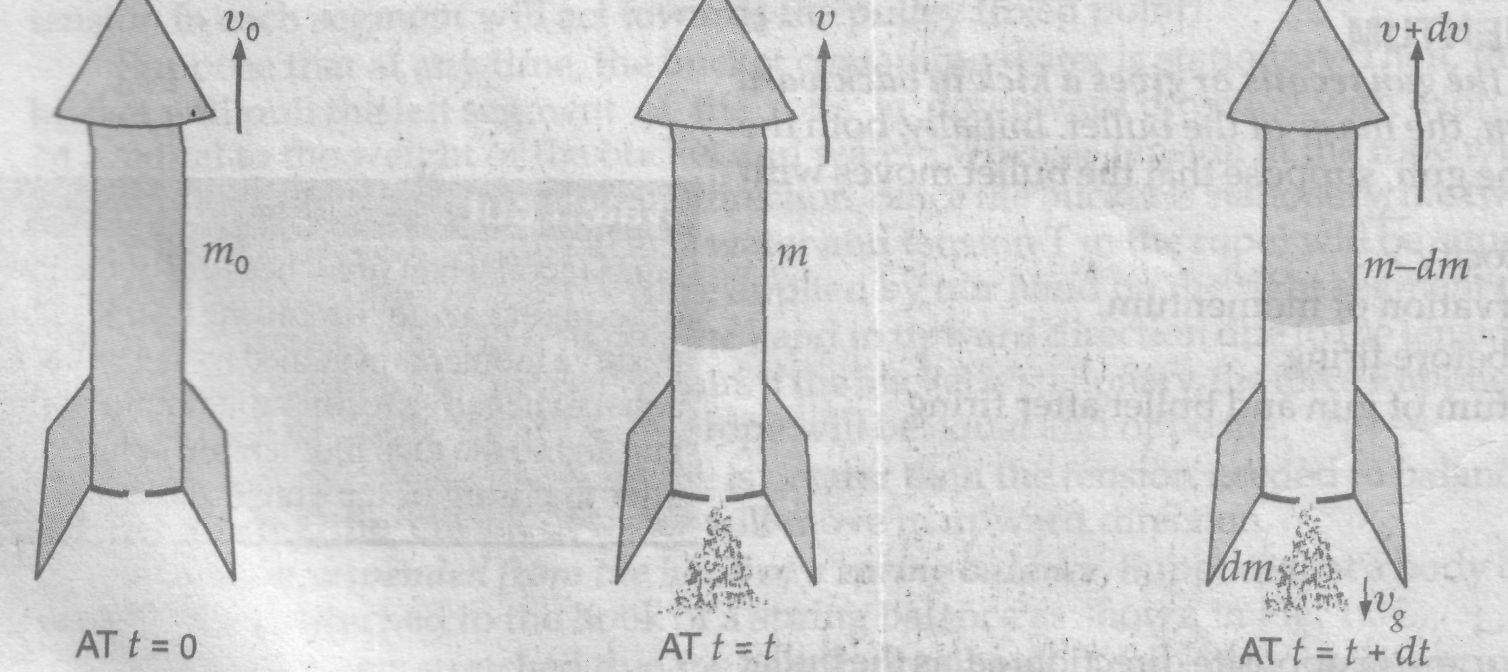
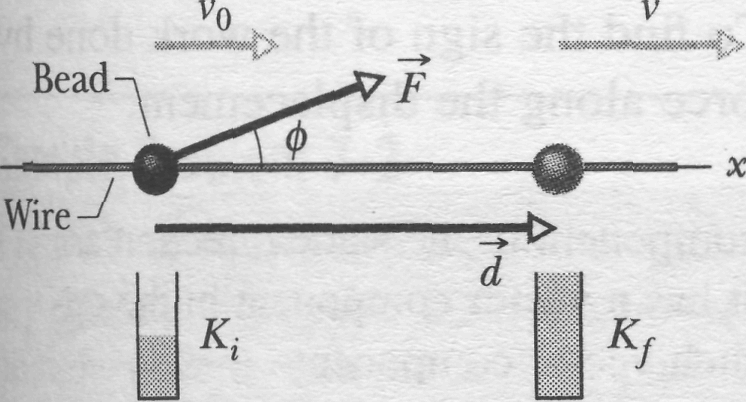 Fig. 7-2
A constant force F
directed
at angle ф
to
the displacement d
of
a bead on a wire accelerates the bead along the wire, changing the
velocity of the bead from ~v0
to
7. A "kinetic energy gauge" indicates the resulting
change in the kinetic energy of the bead, from the value Kt
to
Kf.
Fig. 7-2
A constant force F
directed
at angle ф
to
the displacement d
of
a bead on a wire accelerates the bead along the wire, changing the
velocity of the bead from ~v0
to
7. A "kinetic energy gauge" indicates the resulting
change in the kinetic energy of the bead, from the value Kt
to
Kf.